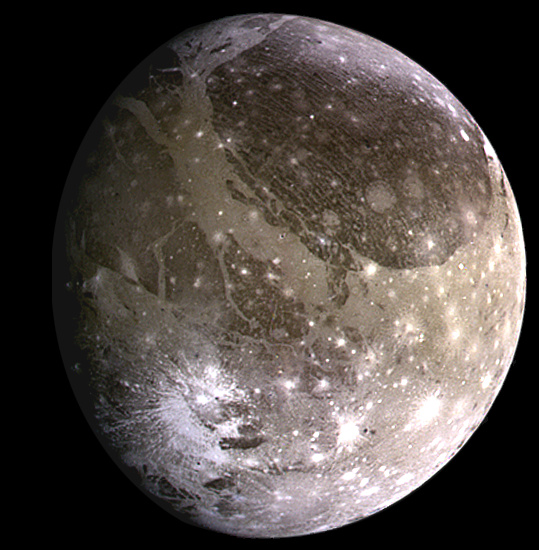Ganymede

Credit: NASA
Ganymede is the largest of Jupiter's moons and the largest in the whole Solar System. It is even bigger than the planet Mercury, but only about half the mass. This means it must be much less dense. It is twice the mass of Earth's Moon.
It only takes 7 days for Ganymede to orbit Jupiter. The moon is so large it has its own magnetic field - but has no atmosphere around it.
The surface is made up of a mixture of rock and water ice. The Galileo spacecraft found evidence of a saltwater ocean nearly 200 km below its surface. The ocean is sandwiched between layers of ice. It is thought that there is more water in this ocean, than in all the oceans on Earth. There is a small chance that simple forms of life may exist in that ocean.
The surface appears complicated with mountains, valleys, flat plains and craters. It also has many light and dark regions. The darker regions have more craters and are thought to be older. The light regions likely to be caused by recent plate movement.

